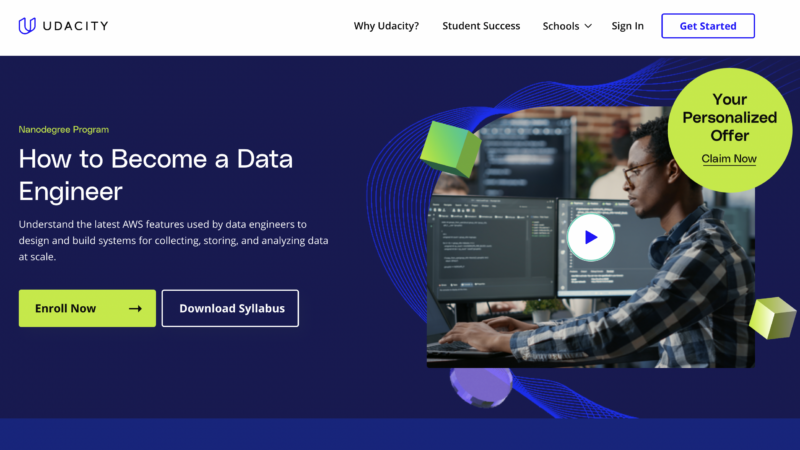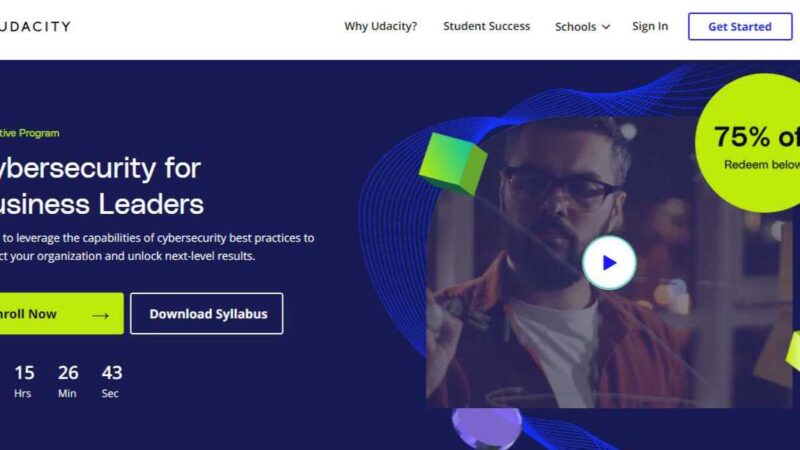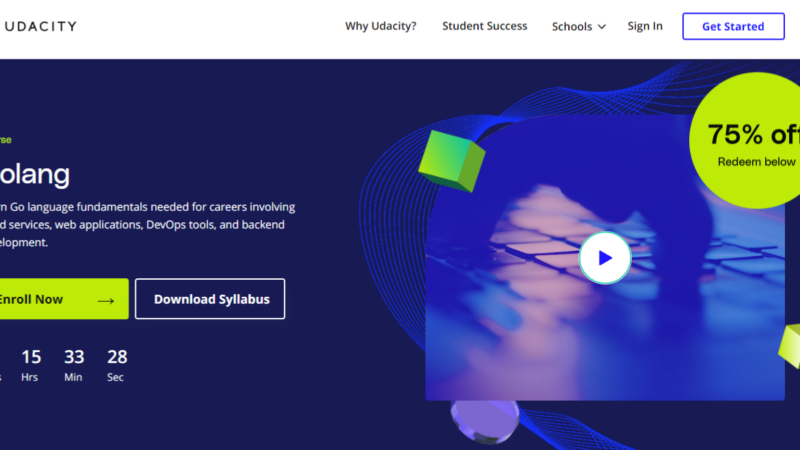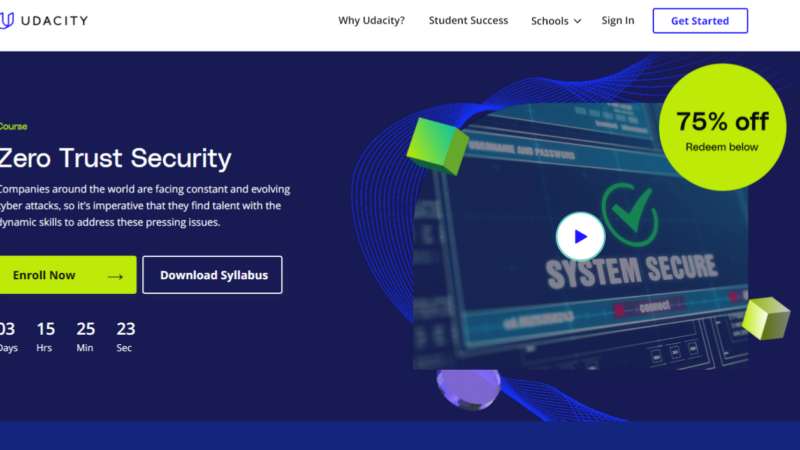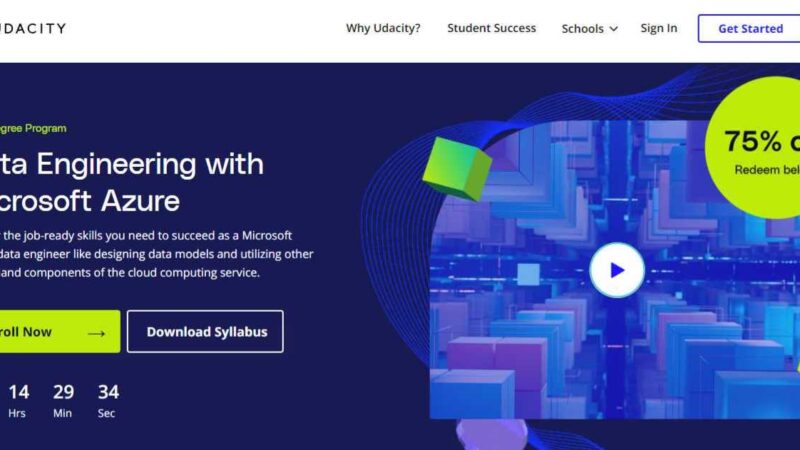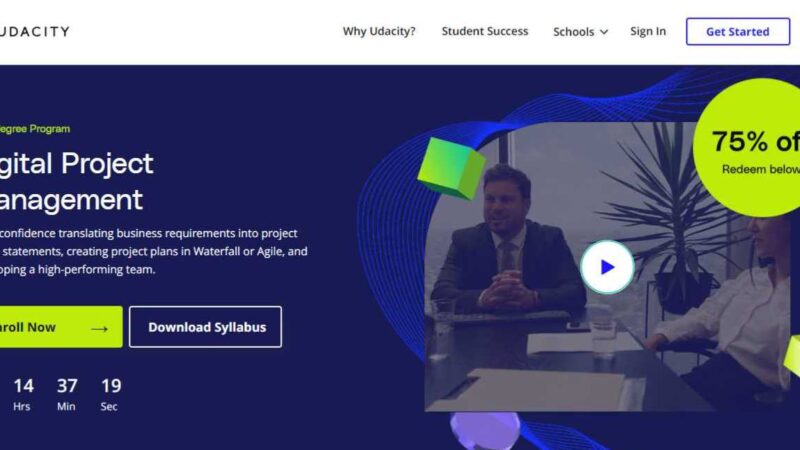Udacity Data Streaming Nanodegree Review

The digital age is upon us and there is now a larger push than ever for organizations to transform. The ability for communications between organizations on the digital front comes from the way in which large amounts of data are processed-known as data streaming. Experts that understand how to gather up data and send it across portals in the most effective ways are in high demand, helping corporations, organizations, and small businesses make the switch to a more digital way of doing business.
Of course, like many other careers that deal with technology, some type, of course, is needed to gain the skills necessary to land a job. While there are lots of options when it comes to online academies, we are here to talk about one in particular-Udacity’s Data Streaming Nanodegree. Apart from an in-depth curriculum, each nanodegree comes with perks that aim to set it apart from other online academies. In this review, we’ll see if Udacity stands up to its promise, to deliver, taking a look at the course, instructors, and the cost to help you decide if it’s worth it.
About Udacity
First of all, we’ll start with a quick introduction to Udacity. You’ve probably already heard of them, especially if you’ve been searching for online technical courses. What you probably don’t know is that this course was developed in collaboration with two professors from Stanford University. Realizing the increase in the need for technical knowledge, they created an online portal where learners from around the world could log in and access free courses.
Today, it is much more than just an online learning portal. Udacity has collaborated with a lot of leaders in the industry to develop video lectures and courses that go further in-depth about technical topics. Plus, Udacity now offers nanodegrees, designed to help learners expand their knowledge and land a job in the IT field.
Udacity Nanodegrees
Nanodegrees from Udacity are created to focus on a topic in the industry, leading learners through both in-depth topics and hands-on projects. Each nanodegree program comes with:
- A mentor
- An online community
- Self-paced learning
- Career coaching and interview prep
- Job assistance
Pretty sweet, right? On top of the perks, each nanodegree is led by a killer set of instructors, most of which have both industry and educational experience. Before we get to the course, let’s take a look at your course leaders.
Meet your Instructors
Ben Goldberg
Ben is an engineer with a whole lot of experience. He is currently working with SpotHero, working heavily with Airflow technologies. Ben is an awesome instructor that provides a fresh perspective when it comes to in-depth topics. He will lead you along some of the course basics, getting a bit more detailed as your knowledge base expands.
Judit Lantos
Judit works for industry giants-Netflix, as a data engineer. She gives students useful advice from her in-field experience, using it as a useful example of what learners can expect from their first days on the job. Her specialty is insight data science, working closely with both engineers and coders to process and analyze large loads of complex data.
David Drummond
David studied physics and has a Ph.D. in the topic. His ability to think outside the box is emitted in his video lectures, where he explains engineering topics. With David, you’ll take a look at hands-on projects and get some real examples of what experts in the industry are working with during their day-to-day jobs.
Jillian Kim
Jillian has done it all, from building data structures and platforms to machine learning pipelines. Her industry experience includes a position with Samsung as a research engineer and data engineer for Change Healthcare. During her lectures, she never fails to mention how the topics fit into the industry, helping put meaning into the topics you’ll be learning.
Prerequisites
Before we get to the specifics of the course, let’s first take a look at the prerequisites. The course is considered to be intermediate, which we back 100%. It is not recommended for beginners, especially for those that have no prior knowledge of SQL or ETL. It also makes a huge difference if you have some sort of introduction to service architectures and Python. These will appear throughout the course but will not be explained, as it is not the main focus of the course.
So, to make sure that you can be the most successful if is recommended to at least take an introductory course on the topic or study up on your own. There is an Introductory Data Science Nanodegree Program that acts as a feeder into this course for those that feel they need it. But, if you have experience with the prerequisites, go ahead and start!
Course Breakdown
So, let’s get to the curriculum. The course is split into two sections, both further broken down into different modules. The two sections are:
Data Streaming 101
Here, you’ll start your journey into data streaming. You’ll work with Apache Kafka ecosystem, ApacheAvro, Kafka Connect, and REST and KSQL. We know, these may sound intimidating but, by the end of this module, you’ll understand them and be able to use them in a sentence all on your own. As a way to put all the information together and test your newly learned skills, this section ends with a project where you will optimize data. Specifically, you’ll work with data collected from Chicago’s public transit, writing code to show its status and transform it into useful material.
API Development and Documentation
In this part of the course, you’ll get a first-hand look at application building. You’ll learn more in-depth procedures of data streaming, including Spark streams and how they integrate into Kafka. For the final project, you’ll work with data collected about the crime rate in San Francisco. Using this data, you’ll analyze and create structured streaming using help from the tools introduced earlier in this section. In the end, you’ll create a pipeline, that takes care of all the data processing: from analysis to report generation.
Course Duration
The curriculum may sound like a lot to get through but, it’s not as bad as you think! First, let’s look at what Udacity has to say. They estimate that, at 5 to 10 hours per week, learners can finish the course in just two months. While we agree with Udacity’s estimate if you’re only dedicating 5 to 10 hours, we actually were able to grasp the information quickly, make it through modules pretty fast. For us, we completed the course in just one month, spending about 15 to 20 hours a week. We did have to study up on a few things when we got to the second module but, nothing too drastic. It was more of a light review.
We must admit, there was an ulterior motive to our increased pace, and that was the total course cost. More on that below.
Course Cost
Udacity offers learners a few ways to pay. You can do this per month or, take their recommendation and enjoy a discounted price for bundling up and paying upfront. This is why we decided to buckle down and finish this course as fast as we could, hoping to save some money in the process. The price per month is €359. Included in this price is the ability to take as long as you’d like, so long as you pay the price.
On the other hand, if you take Udacity’s recommended timeframe of two months, you score a 15% discount and pay €618. This is not a bad price, especially for all the things you’re learning in the course but, we are always on the hunt for the best deal. It wasn’t difficult to finish the course in one month but, do be careful when choosing your way to pay. If you’re not confident you can finish in less time than the recommended timeframe, you could wind up spending more in the process.
What Learner’s Say
We’ll tell you our thoughts further on down but, take a look at what other learners had to say about their experience with the Data Streaming Nanodegree from Udacity. Overall, Udacity has a pretty solid rating across the web and so does this course in particular. The Data Streaming Nanodegree has a rating of 4.1 out of 5 stars, and here is what a few reviews had to say:
“This particular course and project were really great. I’ve managed to learn a lot about Kafka and Kafka-related tools and solutions. It would be great if there will be next step course with streaming for really more advanced projects to continue improvement of data streaming skills.” – Kiryll K
“I have already done some courses in udacity related to machine learning. I real like the courses offered by udacity. This time is no different. It’s a very good content explained in detail. The projects are the top part, because you have the oportunite to practice the content and fix what you learned.” – Dharlan O.
“It is a nice program. However, something that I found little annoying was not being able to check the webserver output when using Udacity workspace. It would be nice to do so… and to have some experience setting Kafka on Cloud as well.” – Uira C.
Job Market
One more important thing to look at is the job market you’ll have waiting for you when you complete the program. At this time in history, data is in high demand. All industries are making a transition into a more digital way of doing things, increasing the need for knowledgeable individuals that know how to analyze and process data. As far as data engineers go, IBM reported an expected 28% growth in the demand for data engineers over the next three years.
In this course, data streaming is the topic of interest and, comes with even higher demand as companies look to better understanding the data they’re collecting. As a matter of fact, in 2019, postings for data streaming related jobs increased by 88.3%. That being said, you have a whole lot of opportunities at your fingertips. Plus, combine that with the Udacity name and, you might be able to walk into your first gig right after completion. This is especially important today, as the whole world awaits news about Covid-19. There are several industries left affected by the virus, decreasing the job market and demand for many. In terms of data engineers, there has not been any significant drop as of yet, and it seems that it will stay that way for some a long time coming.
Final Thoughts
Wondering about our thoughts on the course? Well, here goes. We loved it! Not only because we have a keen interest in data and the processes of analysis overall but, because it is a really well-constructed course. We learned a lot and enjoyed each and every lesson. Our favorite part about the course was the projects, allowing us to use our imagination a bit to test out what we learned in the course. The only thing that we didn’t like was the price and we thought the recommended timeframe was a bit exaggerated.
As we said, we finished this course in just one month, spending max 20 hours per week. If you have the time to spare, it is worth trying to finish the course faster, saving a few bucks in the process. The thing that we love about Udacity is the extra perks, which helped us hunt for our first gig. Access to a database filled with recruiters is yours to take advantage of after completion of the course. You can find all sorts of companies on the hunt for your newly learned skills plus, schedule a mock interview to practice a bit. If you’re thinking about a career as a data engineer, the Data Streaming Nanodegree could have you on your way in two months or less. Our only question is, what are you waiting for?
Get Flat 65% with our exclusive link, Claim Now
